SHOP TALK: Hoarding, Stashing or Maintaining?
May 5, 2010
Hoarding, stashing or maintaining a supply cupboard inventory? The lines are blurred and often the balance is very delicate. The creative spirit can easily get lost in the chaos of clutter. While it is a gift to be able to see creative potential in everything, it can also become a curse. What to save, what to discard, and how to keep your studio organized are important to anyone’s creative process.
I have vivid childhood memories of the Fibber McGee and Molly radio shows. Someone would be searching for something and open “the closet.” This would trigger a clatter of sound as the overcrowded and disorganized closet inventory would come tumbling out. The understanding was that someday it would all get organized. Organizing does indeed take time and effort. So does searching for the misplaced tool or supply. How often have you searched for a tool, given up, driven to the hardware store and bought another? Why do we have 17 Phillips-head screw drivers?
A Case Study in Extreme Hoarding:
The Collyer brothers, Homer and Langley, were eccentric hoarders. They were born in the l880s and lived in their family’s three-story brownstone in Harlem (NYC). The older brother, Homer, was blind, had suffered a stroke and was totally dependent on his younger brother, Langley. Langley would forage, scrounge for food and collect throughout New York City then haul stuff back to their home packed in a cardboard box pulled by a rope. At the time of their death in 1947, the extreme nature of their hoarding was revealed to a curious public.
The Collyer home was filled with family memories and possessions mixed with Langley’s collecting–things that (in the end) accidently fell and crushed him. Homer, unable to care for himself, starved to death. Both highly educated, rational men of reasonable means hoarded to an extreme. Why? Were they protecting themselves with stuff? Barricading themselves from the hostile, changing world? What does is say about their emotional health and social relationships that they chose to live so intimately with objects discarded by their neighbors?
(Check out a NYTimes reviews of E. L. Doctorow’s recent novel Homer and Langley and hot-off-the-press Stuff: Compulsive Hoarding and the Meaning of Things by Randy O. Frost and Gail Steketee. For hoarding photos check out TLC’s website for Hoarding: Buried Alive and the Disposophobia website.–Ed.)
Psychology of Hoarding:
While the animal model of hoarding belongs to the pack rat, the psychiatric model of hoarding belongs in the group of human anxiety disorders. It is associated with obsessive compulsive disorder. In this case, emotion is highly contained, shut off or compartmentalized and is usually overpowered by the dominance of logic.
Clinically, extreme hoarding is very difficult to treat as many of the other obsessive compulsive symptoms are not present. Hoarding may well be biologically based but the popular SSRIs (serotonin related anti-depressants) do little to dent the urge to accumulate. The dynamics of hoarding are often based in irrational logic:
“This has value so I’ll save it…
This is pretty, I can’t throw it out…
This will be useful someday.”
Time seems to be an inherent, unspoken part of hoarding which becomes symbolic of past travel to different places, of special memories, of a healthier or better time. And the delay in discarding is connected to the future, when “I will have more time.”
Cyndy Salzmann, a Nebraska-based professional organizer, shared some insights on hoarding by comparing the personality type of the introvert to that of the extrovert. Introverts tend to keep stuff as a kind of security blanket. Things are tightly held against the fear of being deprived. In contrast, extroverts seem more able to trust that “somebody somewhere will have what I need” and “all I have to do is ask”.
Artistic Relevance:
Creative fiber artists often do more than one technique or process. As a result of this cross fertilization and broad interest, many of us collect all the tools, all the books, all the materials and all the examples. Without a strategy for organizing them, the clutter can lead to chaos.
Another dynamic of the artist includes the complex emotions surrounding buying, collecting and saving a “stash”. Most people light up like neon when they talk about their stash of special fabrics, unique dyes, paints, special tools or precious supplies.
Jennifer Moore, SDA member and master double weaver, has observed in her own work that an outward organization is necessary for an inner creative process. If she doesn’t see a yarn, it’s lost to her creative efforts. Stored in a basket in a closet it’s lost. She works diligently to organize and contain books, supplies and tools related to her work. If she gets intrigued by a new technique, she is cautious about acquiring the books, materials and tools. Once yearly she goes through her studio to discard what’s been unnecessary. Time spent looking for something is creative time wasted.
Solutions for artists who hoard, stash or collect to excess:
If you truly feel helpless and want professional help to de-clutter, organize your work space and get a fresh start on a new studio maintenance plan, you may want to consult a professional organizer. The National Association of Professional Organizers has a website which outlines the process of consultation and includes a directory easily search by zip code. A professional consultation provides guidance for de-cluttering, assistance with general disorganization, help with deciding what to keep or discard and problem solving for difficulties with finding things. These consultants are also up-to-date on the vast array of new storage products. Professional organizers often do a lot of speaking and may be willing to talk with your guild or study group.
Fellow artists shared some practical suggestions:
Pass it along, directed sharing: Networking with other artists and keeping track of what materials or supplies they are working with gives you an option of discarding that unused dye by passing it on to another artist.
Adaptive Swap: A guild member recently arranged a swap where all members brought unused and unwanted materials which were then shared with others. Everyone went home with something new and interesting to them.
Creative de-cluttering: Another artist has an annual early spring garage sale–before the true garage sale season gets into full swing. The focus is on de-cluttering, not profits. Everyone brings “stuff” they no longer want or need. Food and fun are the goal and the profits are sent to a charity. It becomes a subtle reminder to be careful about re-accumulating during the garage sale season.
Personal Organizer: A strategy I’ve found helpful is to keep a chronological notebooks of samples, experiments and answers to new technical questions. Rather than a disorganized collection of swatches in a box in the basement, I choose representative examples that best show an outcome, a mistake or a detail that helped me to deeper understanding. This notebook is kept in chronological order as I find my ideas and knowledge build on itself with time and experience. Retrieval is easier as everything fits on my personal textile time line.
Creative re-purposing to de-clutter: Recently, I helped a group of creative friends put together a broad range of stuff for the purpose of making “voodoo” dolls. It turned out to be great fun and surprising creations came from scraps, threads, wires, beads and found objects. One artist brought her personal stash of collected things found on walks in her neighborhood.
Traditional re-purposing: The Robert Hillestad Textile Gallery Friends have been doing an annual garage sale for a number of years. It’s specific to textiles and a great way of getting rid of unused things and acquiring new things. The Textile Center in Minneapolis has a similar event–perhaps you can find (or start) one in your area. It’s been fascinating to help out when generous people are ready to de-stash, the experienced traveler is ready to share treasures, or the specialized technical wizard is willing to de-clutter.
Summary:
Sit for a minute and ask yourself some basic questions:
- Do I get overwhelmed simply looking for things?
- Do I trust that good supplies and materials will always be available?
- Do I hang on to stuff that I don’t use? And if so, who might enjoy working with this?
- Can I do every technique I see, hear or read about?
- Could I be GOOD at every technique I’m interested in?
- Would a short workshop be a good way of experimenting with something new to see if I’d like to invest time, money and storage space for the additional process and paraphernalia?
Let your answers be your guide toward a less cluttered creative process.
_______________________________________________________________
Jay Rich describes himself as a “shibori experi-‘mentor’ and textile researcher” who has used his 10+ year membership in SDA to deepen his understanding of dyes and surface treatments. He has a studio at the Hot Shops Art Center in Omaha, Nebraska.

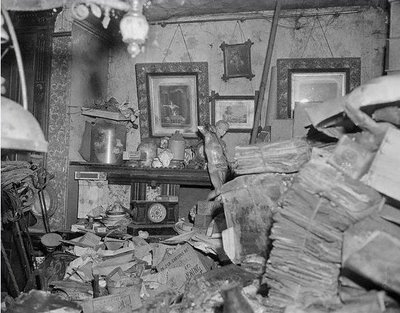
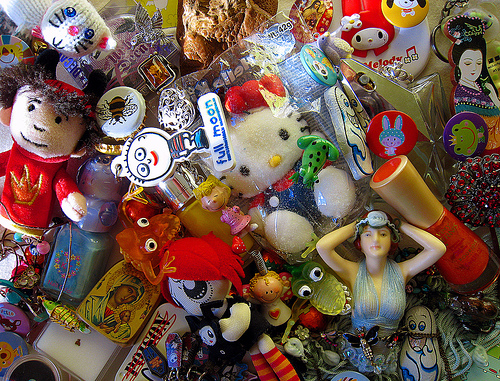
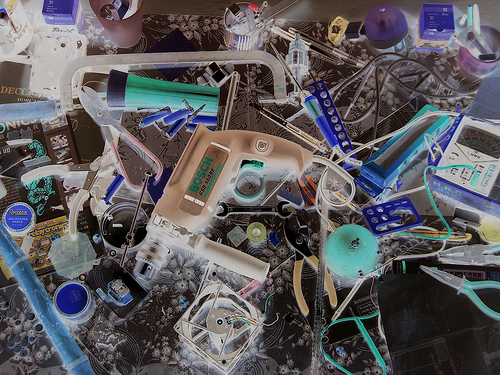
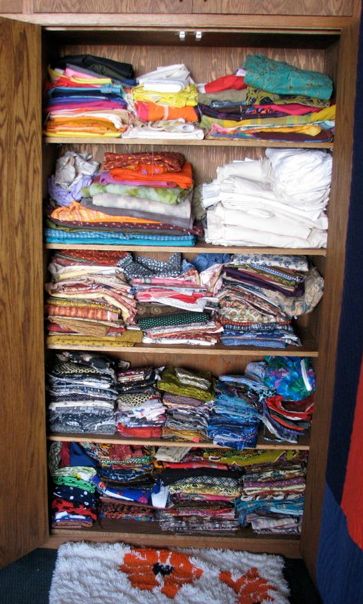
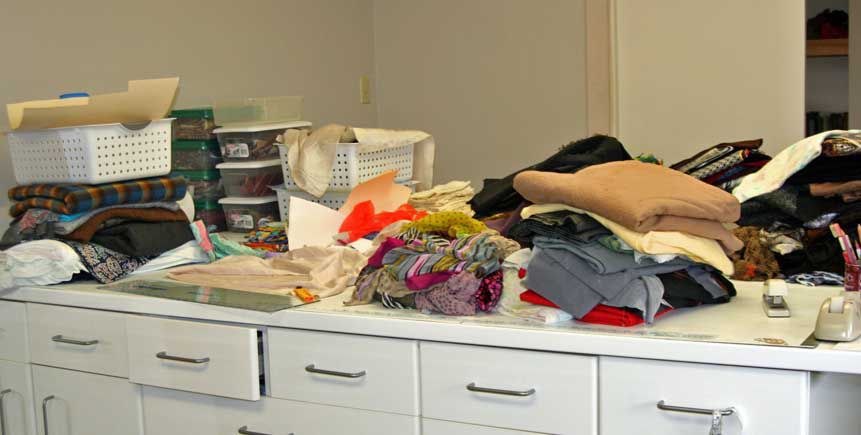
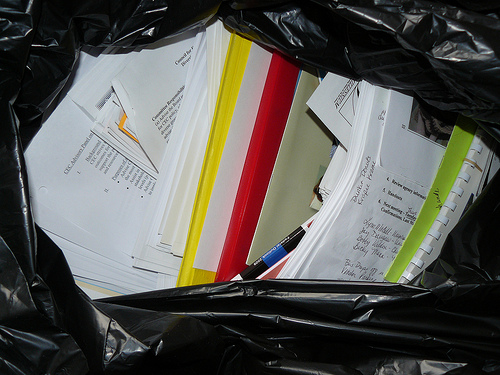
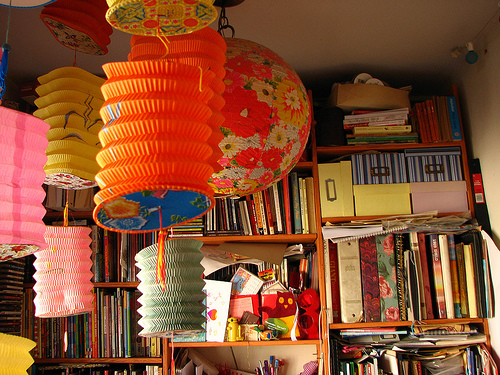
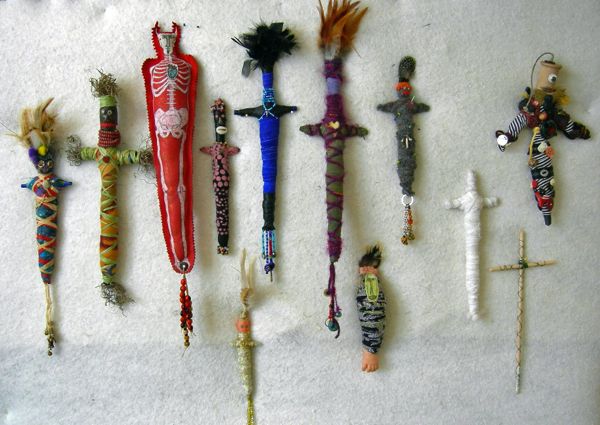
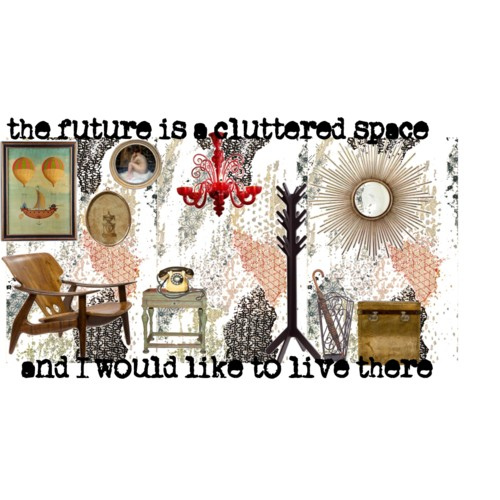

3 Comments
Mary Edna Fraser says
June 3, 2010 at 7:46 am
Jay, great article and very helpful in the need to purge our busy lives.
Beth Lee Segal says
June 4, 2010 at 11:31 am
If I had a dollar for every time I held onto an interesting image or weird little object because I found it inspiring...I think artists of all types have an even harder time than other people deciding what to keep and what to toss. Great piece and photos.
Nicole Snow says
August 9, 2010 at 11:02 am
what a great article. After moving so many times for my hubby's job, I learned to clear the clutter but one of my favorite techniques is to get rid of 5 things a day. Another technique that I love is if you're going to get rid of the items, take a digital picture of it and make a folder called inspiration so you can just click through it if you need a jump start! Having a clutter-free space has been instrumental to me actually being more creative.
Related Blog Articles
Creative Process
“Fringe: On the Edge of Fiber” — Out Now!
Creative Process
Friday Fibers Roundup: Craft & Color
Creative Process
“Standing Tall: A Heart-FELT Reflection” by Martien van Zuilen